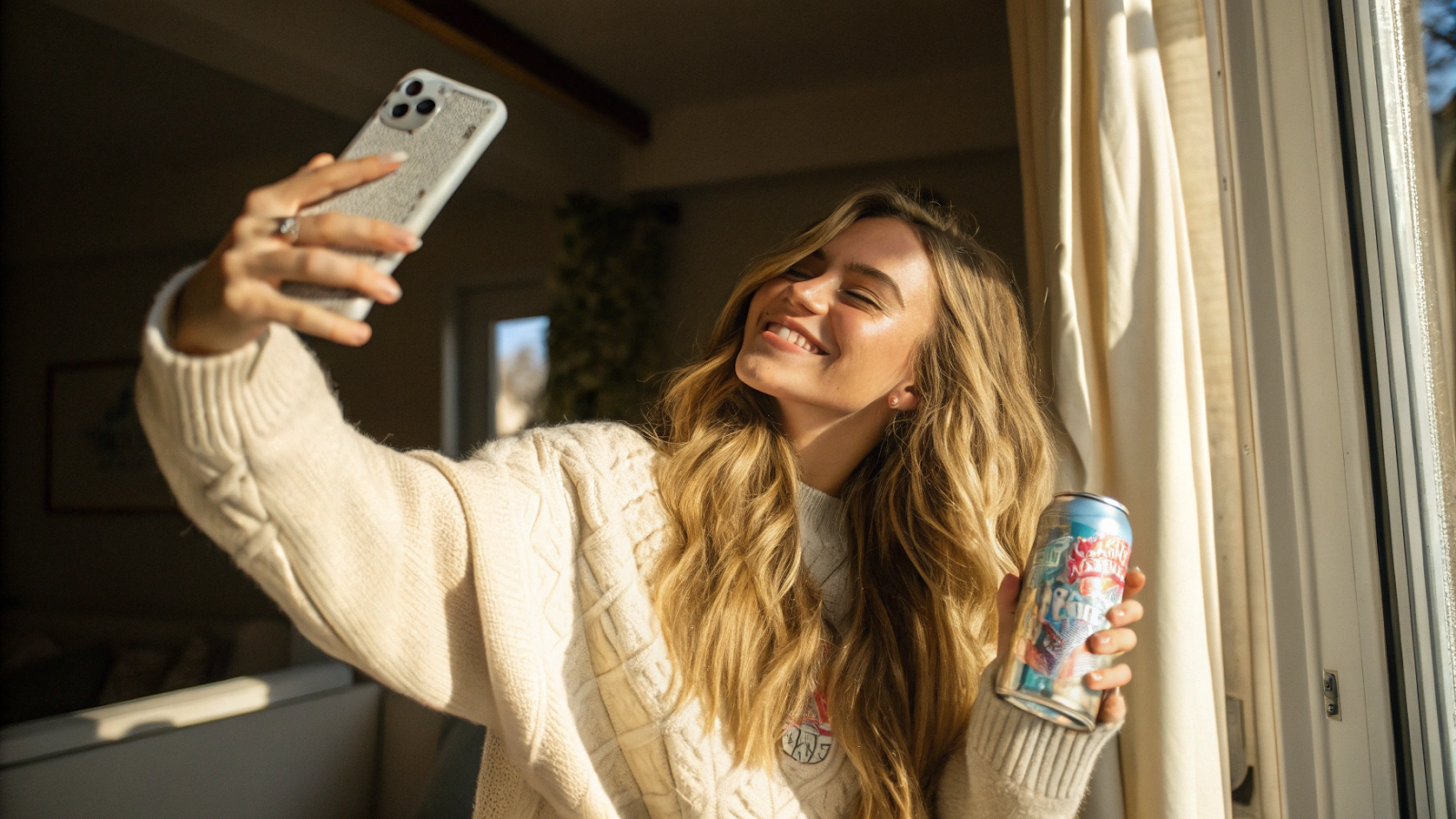Micro-influencers offer an excellent opportunity for brands to connect with their target audience and build trust while promoting their products. If you don’t already know what a micro-influencer is, they’re social media influencers with an audience of between 10,000 and 100,000 followers. Brands often assume that a bigger audience is better, but that's not always the case. Micro-influencers are skilled at connecting with niche communities and have more direct interaction with their followers, which yields higher engagement rates. In fact, 89% of marketers say that the ROI on influencer marketing campaigns is comparable to or better than other marketing channels. Brands can earn $5.78 in earned media value for every $1 they spend, with the most successful brand and influencer partnerships reaching $18 for every $1 spent. So, knowing how to find micro-influencers and use them as part of your marketing campaign is crucial if you want your brand to be successful online. An estimated 81% of all active Instagram influencers are considered micro-influencers, so there are plenty of them to partner with. There are already a lot of successful brands working with micro-influencers, and you can be one of them. This guide will help you find micro-influencers and start developing campaigns.
Questions To Answer Before You Start Searching for Micro-Influencers
Proper planning is needed before you start contacting any micro-influencers. Without a clear direction, your campaign won't be effective, so make sure to take these steps before you get started.
What Goals Are You Trying To Achieve With a Micro-Influencer Marketing Campaign?
You need to determine your goals before you go looking for micro-influencers. Think about what type of influencer you're looking for, and what you hope to get out of the broader marketing strategy and individual campaign. For example, are you partnering with influencers to build brand awareness, reach a niche audience, drive sales, increase trust in your brand, or improve engagement on your own social media pages? Which metrics do you think will best capture the performance of a micro-influencer marketing campaign? Brands often keep an eye on impressions, shares, and clicks, as well as conversion metrics like purchases or subscriptions. Understanding what your goals are will give you direction when you come to find micro-influencers, so you can build beneficial relationships that give you the best return on your investment.
What Exactly Will You Be Asking Micro-Influencers To Do for Your Campaign?
You also need a clear idea of what their specific role in the campaign will be before you reach out. If you don’t know what you expect from them, it's difficult for either of you to gauge whether the relationship will work or not. It can also lead to campaign management and misalignment issues down the road. And you don't want the influencers to realize mid-campaign that they can't make the time commitment. Setting expectations early on is the key to creating a reliable working relationship with the right influencer for the job, as well as meeting your goals, so think carefully about what you need them to do. Do you want them to make a single, one-time Instagram post or will this be a long-term engagement? If it's long-term, how often do you expect them to post? Do you need somebody to help with a product launch? Consider the type of content you're looking for too. For example, how important is video content to the campaign? Additionally, you need to be clear about what your role in the campaign is too (are you their main point of contact, the lead marketer on the campaign, etc). That way, everybody knows where they stand and how to communicate effectively.
How Many Micro-Influencers Will You Need To Hire And Manage?
Understanding the scale of the campaign and how many micro-influencers you need to hire will help you manage your budget. Kraft Heinz, for example, worked with 12 influencers to promote their new Food and Family content hub. Not everyone you reach out to will say yes to the collaboration, so knowing how many people you need helps with creating your list of potentials later on too. We know many brands use their main marketing budget to fund these campaigns, and want a straightforward answer on how much a single micro-influencer post costs. But the truth is that influencer campaign costs vary widely! Pricing depends on factors like follower count, demographic, length of the campaign, number of content pieces, the social media platform(s) you’re targeting, and more. Our suggestion? Have the pricing conversation as early as possible during outreach, even if the final deal may look different later on.
Strategies To Find Micro-Influencers For Your Brand
Once you’ve determined your goals and considered the details of your campaign, it’s time to start reaching out. There are a number of simple strategies you can use to build a list of potential micro-influencers.
Monitor Your Target Hashtags and Discover Feeds Across Channels
Social media hashtags are a simple way to identify influencers that naturally intersect with your brand. If they're consistently posting with relevant hashtags and have all the hallmarks of an engaged audience, they're likely to be a good candidate. So, perform hashtag searches on the social networks your audience or brand community uses the most. Although influencers are largely active on Instagram, they often cross-post or focus on other platforms like YouTube, Pinterest, Facebook, and more.
Research Your Current Customer Base To See if Any of Them Are Micro-Influencers
You don’t necessarily have to look outward to find a micro-influencer. Your existing customer base is a great resource for discovering influential people and groups. You can use your CRM database or social listening tools to identify influencers that exist on your customer list. These influencers are already familiar with your brand, and some may even be brand champions, so they're likely to be open to a partnership.
Monitor Post and Video Locations To Find Micro-Influencers That Work Near You
Many (if not all) influencers include locations on their photos and videos, and you can leverage this info to find people in the community to work with. Being able to meet face to face and get more hands-on experience with the brand is appealing to micro-influencers.
Follow Word-of-Mouth From Other Companies and Influencers
Using platforms like LinkedIn or searching case studies allows you to connect with other brands and the influencers they work with, and this can be an effective way to build your list. You should also get in touch with influencers you have worked with in the past and see if there are other people in their network that may be willing to work on the campaign.
CTA: Skip the headache. Use the influencer search tool on the From Popular Pays platform to find the best micro-influencers and the perfect partnership in minutes. Search by social network, number of followers, demographic, skills, and more.
We’ve got even more helpful strategies to discover new influencers for your campaigns. Check out our in-depth guide with an overview of the best tools and tips.
Recommended Reading: 6 Examples of Brands Working With Micro-Influencers That Paid Off
What To Do After You’ve Found Potential Influencers
The methods listed above will help you draw up your initial list, but knowing how to find relevant micro-influencers is just the starting point. Now, it’s time to make connections. Follow these basic steps to contact influencers.
Develop an Email and Pitch Method
Your pitch should consist of three parts:
- An introductory email to ask if they're willing to collaborate.
- A second email that outlines the requirements and expectations of the campaign and discusses payment.
- A final email to confirm the details and ensure that the micro-influencer knows what’s required of them and how to start.
In your initial pitch, you need to give some background about the brand and what you do. Pro tip: Provide some case studies on your previous influencer campaigns. They should outline both sides of the arrangement — the benefits for your brand and for the influencers you’ve partnered with. It’s much easier for influencers to decide if they want to collaborate with you when they have a sense of how you work.
Send Out Inquiries
Once you have your pitch templates in place, it’s time to start sending out inquiries. Look through your list and rank the micro-influencers, starting with the ones best suited to the campaign first. Give your introductory pitch to the first group of influencers and if they respond, you can continue with your follow-up emails.
Connect and Get Started!
When you start getting replies and you’ve provided more details, set up some meetings with influencers that are interested. During these meetings, you can nail down the final details and introduce them to all of the tools and platforms they will be using during the campaign, so you can get rolling!
Start Managing Your Micro-Influencers With From Popular Pays Platform
There’s a reason that 40% of marketers use third-party influencer marketing platforms (like From Popular Pays) to work with influencers. It’s tough to properly find, vet, communicate, and manage these new brand partners, whether you’re running a micro- or mega-campaign. The good news? From Popular Pays streamlines tasks for you by allowing you to discover and manage all of your micro-influencers from a single platform. Easily import current influencers and invite new ones, and label and categorize them so you can stay on top of things. Use the chat tool to vet them before moving forward, and then brainstorm ideas, share content, and check progress throughout the campaign. Ready to build your brand and drive engagement with a micro-influencer campaign? influencer marketing platforms(like From Popular Pays) to work with influencers. It’s tough to properly find, vet, communicate, and manage these new brand partners, whether you’re running a micro- or mega-campaign. The good news? From Popular Pays streamlines tasks for you by allowing you to discover and manage all of your micro-influencers from a single platform. Easily import current influencers and invite new ones, and label and categorize them so you can stay on top of things. Use the chat tool to vet them before moving forward, and then brainstorm ideas, share content, and check progress throughout the campaign. Ready to build your brand and drive engagement with a micro-influencer campaign? Request a demo to get started.

















